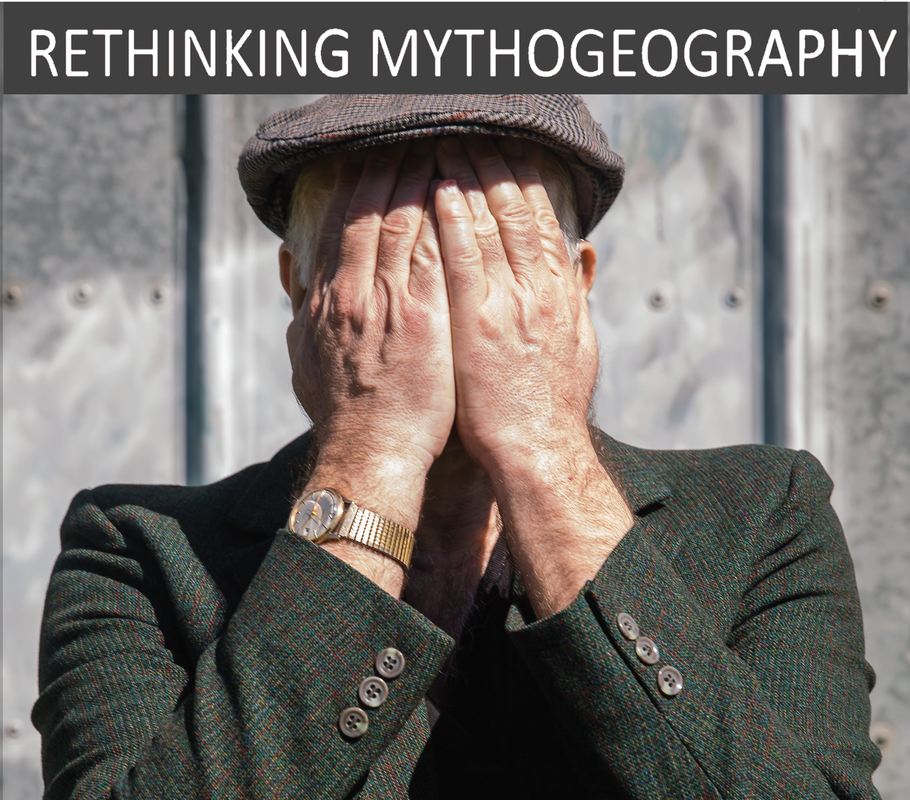Go back to the book's main pageExtracts from a long and highly engaging review by Frank Mills
"The concept of town myth as an inhibiting myth is explored in Rethinking Mythogeography through the questioning of observations and rite of wandering. As Phil explores, the accompanying “Blazing Walk” documentation adds insight to his musings and thoughts on how to elucidate the larger narrative. There’s an urgency in this, in that the connection to a narrow myth of place brings about an ideological entropy that hangs about and permeates the culture. This is what is happening to Northfield, but it is also happening where we live. The urgency to break the confines is not just found in Northfield. It is found everywhere. The goal of mythogeography, we are told, is to rupture the entropy and reverse false connections. The goal of mythogeography is to “connect texture and detail to the big picture and how, as a common practice it can change situations and not just comment on them .” Frank Mills Read the full review |
Reviews of
Rethinking Mythogeography From a review by Mary Paterson on The Learned Pig:
"Rethinking Mythogeography is... a twist of contradictions – a suspension of ideas, that is, of course, entirely in keeping with Smith’s approach. Careful to continue his construction of mythogeography as a philosophy open to all, this book is also anchored in the body of its artist-author. Overwhelmingly positive about the Northfield residency, it is also a humble and self-critical reflection on the problematic role of an artist on the international festival circuit. ...it is attached to a real [walk performance] but creates an imaginary and extravagant double life for it: the book will have a much larger audience than the performance, and it brims with ideas that Smith didn’t have time or didn’t remember to include. ...On the page, ideas can spin in high frequency, creating a shadow walk that is more vivid than the real one. Smith foreshadows this in his description of neo-romantic pilgrimage, in which the journey takes precedence over the destination. Ironically, the logical conclusion of this is that the journey can be erased. ‘Pilgrimage becomes, then, a smooth and mobile space. The soul is not saved, but relocated to the ego.’ If Mythogoegraphy has a critical relation to the text book, Rethinking Mythogeography has a critical relationship to the exhibition catalogue. With its artist’s statement, artist’s portraits and high production values, it masquerades as an authority on an artistic oeuvre. But it is nothing of the sort. Instead, it is a soulful, reflective insight into an active mind: a starting point. It ends with a mythic retelling of the infamous Jesse James heist, absorbing Northfield’s best known moment into the experience of a near-stranger; and an invitation to the reader to be ‘mad enough to do this stuff in their own and better ways’." read the full review here. “Excellent examples of both practical techniques for engendering these new states of awareness, as well as a deep theoretical exegesis of psychogeography, are to be found in the new work Rethinking Mythogeography… by Phil Smith. Phil is a seasoned traveller in non-ordinary spaces, creating plays and site-specific installations amongst other things. In his new book (which like the one by me and Greg, is replete with evocative photographic images) he explores the town of Northfield in Minnesota, counterpointing it with observations of the hidden histories of locations such as A la Ronde in Devon.
Phil writes beautifully, capturing in his prose the mythic intent and surreal outputs of ‘disrupted walking’. The magic of the ordinary may at first strike you in flashes or by the sudden falling of a shadow across a scene; but if you can hold onto those moments for a while, stay calm and not grab for the first wonder, then—like the passing freight train—the magic will begin to steam around you in unfolding loops, in strings like movies or stories or chains of DNA.” Read the full review at: https://theblogofbaphomet.com/2018/02/ |

